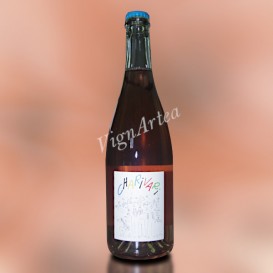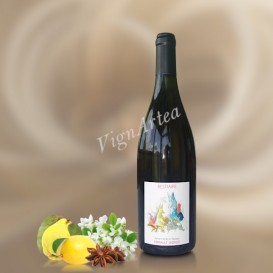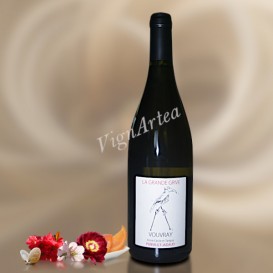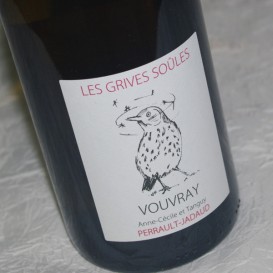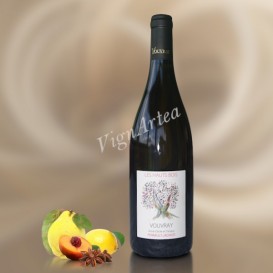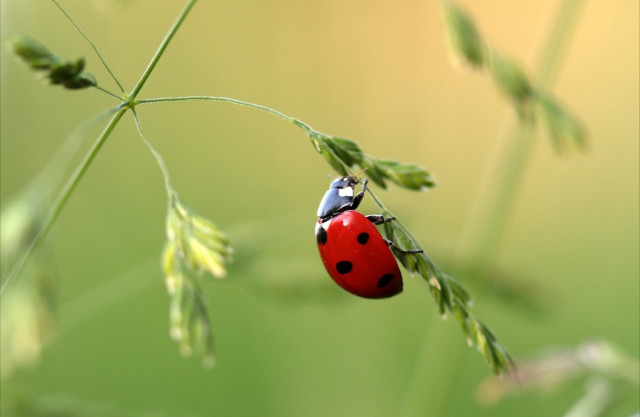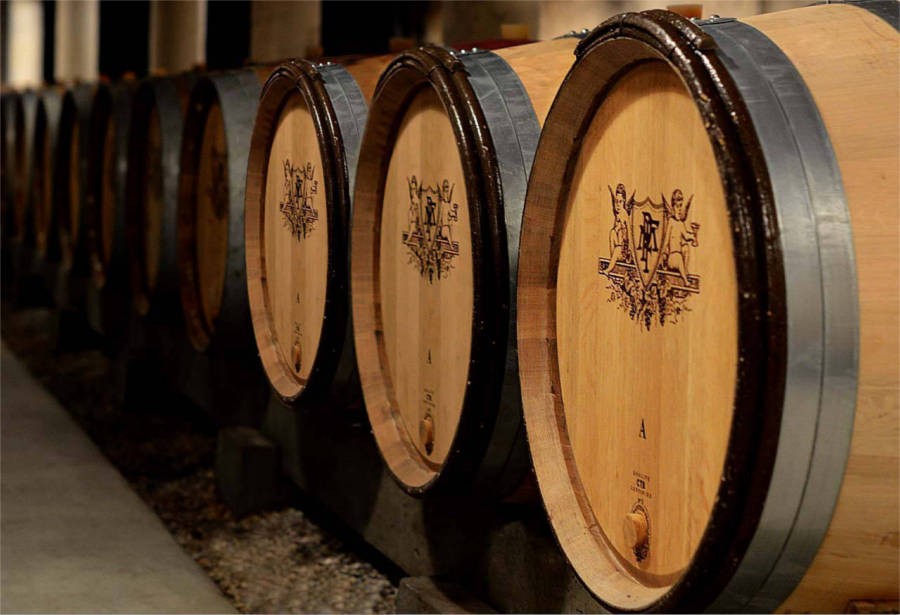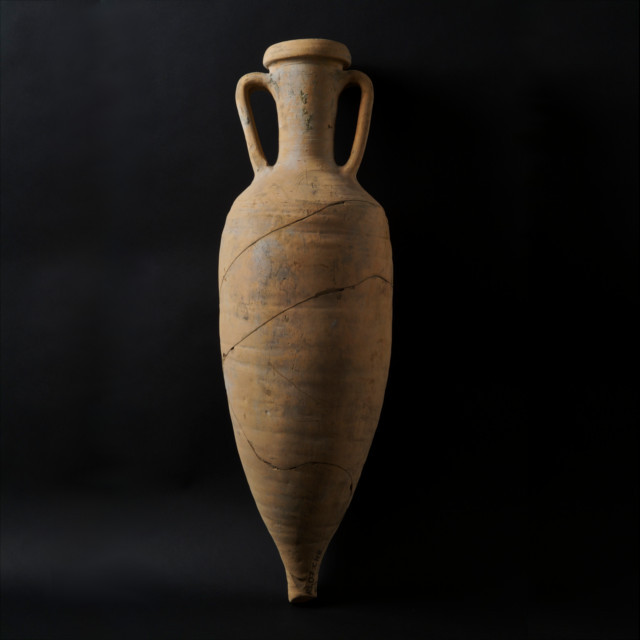Domaine PERRAULT-JADAUD - Vouvray

VOUVRAY 8 ha NON-CERTIFIED ORGANIC CULTURE WINEMAKER : Tanguy PERRAULT & Anne-Cécile JADAUD
ESTATE HISTORY
The PERRAULT-JADAUD domain is first of all the story of a meeting between Anne-Cécile JADAUD and Tanguy PERRAULT.
She was a Touraine oenologist working in the South of France and he was a Breton student in philosophy. In 2009, she decided to return to her native region to teach oenology, while he reconverted to viticulture and became a viticulture trainer: it was at the Amboise Viticultural High School that they both met and founded the PERRAULT-JADAUD estate by settling in the commune of Chançay.
After a decade of construction and purchase of plots, the vineyard now covers an area of 8 ha, enough to produce several cuvées, all with an identity, under the Vouvray and Vin de France designations. Since 2018, Anne-Cécile JADAUD also offers a range of red and rosé wines made with grapes of Côt, Gamay, Aunis, and so on, that are bought to another touraine winegrowers, but for the moment we have focused on the production of their estate only, whose grape variety is composed of 98% of Chenin and 2% of Chardonnay.
TERROIR
The defining geological history of the region begins in the Upper Cretaceous, 100 million years ago. In the Cenomanian, the first geological stage of the Upper Cretaceous, the region was covered by the sea and a continuous marine sedimentation of 30 million years occured at least until the end of the Senonian, -70 million years ago.
The general emersion of the continent which starts thereafter is accompanied by a phenomenon of chalk alteration which we consider today as being at the origin of the flint clays formation, very present in the Vouvray vineyard. During the Upper Eocene, between -37 and -33 million years ago, a continental regime was established which favored the development of detrital formations with the addition of elements of distant origin such as quartz and limestone.
A slight subsidence of the basement in the Miocene (-23 to -5 million years ago) seems to be the origin of a new marine incursion during this geological stage. The sea retreats definitively at the end of the Miocene-beginning of the Pliocene, leaving place to a continental sedimentation.
The estate plots are mainly distributed on soils where the Upper Eocene geological layers outcrop. They are made up of :
- poudingues and siliceous pebbles composed of rolled flints and Jurassic limes aggregated within an extremely hard cement,
- Turonian flint clays, resulting from the alteration of the underlying Turonian rocks and which are very sandy and strongly colored in red by iron oxides,
- yellow tuffeau of Touraine, with a detrital character, either in the form of hard sandstone limestones, or in the form of yellow sandy and soft chalk, rich in quartz.
WINEGROWING & WINEMAKING
The vines are on average 35 years old, with the oldest reaching 80 years. They are cultivated according to the principles of the Organic Agriculture, as evidenced by the grassed rows of the vineyard. However, as the estate is not certified by an official organization, we cannot classify their cuvées as organic wines.
The grapes are harvested manually, with successive sorting, and the multiple passages in the vines rows are determined by their degree of maturity.
On the estate, the tasks are shared: Tanguy works in the vineyard, while Anne-Cecile works in the cellar for the vinifications, which generally take place in vats or in barrels, depending on the cuvées.
The malolactic fermentation is carried out partially or entirely depending on the wine, and the ageing phase generally lasts 9 months. The bottling takes place during the summer following the harvest.
-
CHARIVARI 2022 (Domaine Perrault-Jadaud)
14,90 € OUT OF STOCK!OUT OF STOCK!LOIRE - VIN DE FRANCE - ROSÉ SPARKLING WINE
Grape variety: Gamay (65%) - Grolleau (35%)
Natives Yeasts Slats ageing for 7 months
- Nose: delicate. Notes of fresh red fruit and sweet spices, with a hint of liquorice.
- Palate: fresh and light.
- Tasting date: May 2023.
- OUR OPINION: very original and well-made, this cuvée offers plenty of freshness. Unpretentious, it's perfect for summer meals with friends!
Bottle sealed with a crown cap. - Nose: delicate. Notes of fresh red fruit and sweet spices, with a hint of liquorice.
-
BESTIAIRE 2022 (Domaine Perrault-Jadaud)
14,70 € In stock!LOIRE - Vin de France - DRY WHITE WINE
Grape variety: Chenin (70%) - Chardonnay (30%)
Natives Yeasts
Winemaking in tanks and oak barrels (20%)- Nose: Elegant and intense. Creamy notes, aromas of white peaches, lychee, citrus fruit, with a hint of toasted sesame and aniseed.
- Palate: round and salivating. Slight sweetness on the finish.
- Tasting date: May 2023
- OUR OPINION: a very tasty and nicely flavoured cuvée. It's still as good and well-made as ever. Drink slightly chilled.
- Nose: Elegant and intense. Creamy notes, aromas of white peaches, lychee, citrus fruit, with a hint of toasted sesame and aniseed.
-
LA GRANDE GRIVE 2021 (Domaine Perrault-Jadaud)
24,30 € In stock!LOIRE - AOP VOUVRAY - DRY WHITE WINE
Grape variety: Chenin (100%)
Natives Yeasts Winemaking in 300-liter oak barrels
- Nose: elegant, floral and slightly creamy. Notes of toasted sesame, apricot, quince, with a hint of pear and liquorice.
- Palate: light and salivating. Slightly saline finish.
- Tasting date: June 2023.
- OUR OPINION: as elegant and fresh as ever, full of youth and life. Superb Chenin!
- Nose: elegant, floral and slightly creamy. Notes of toasted sesame, apricot, quince, with a hint of pear and liquorice.
-
LES GRIVES SOULES 2021 (Domaine Perrault-Jadaud)
17,90 € In stock!LOIRE - AOP VOUVRAY - DRY WHITE WINE
Grape variety: Chenin (100%)
Natives Yeasts
Winemaking in 300-liter oak barrels (50%) and tanks (50%)- Nose: tasty and delicate. Notes of quince and pear with a hint of aniseed.
- Palate: supple attack. Salivating finish.
- Tasting date: June 2023.
- OUR OPINION: a fine, fragrant Vouvray with a lovely tension on the palate that gives it freshness and tonicity.
- Nose: tasty and delicate. Notes of quince and pear with a hint of aniseed.
-
LES HAUTS BOIS 2019 (Domaine Perrault-Jadaud)
16,30 € OUT OF STOCK!OUT OF STOCK!LOIRE - AOP VOUVRAY - DRY WHITE WINE
Grape variety: Chenin (100%)
Natives Yeasts Winemaking in concrete tanks
- Nose: elegant. Beautiful aromatic precision. Intense aromas of quince and yellow peach with a hint of aniseed.
- Palate: tonic, tasty and fresh, with a nice lemony finish.
- Tasting date: May 2021
- OUR OPINION: Les Hauts Bois is a dynamic and very refreshing Vouvray, it's original!
- Nose: elegant. Beautiful aromatic precision. Intense aromas of quince and yellow peach with a hint of aniseed.

